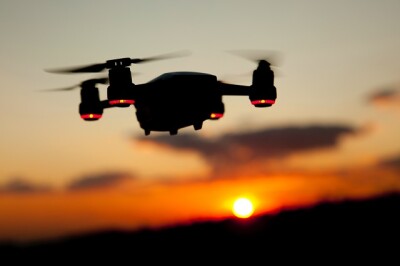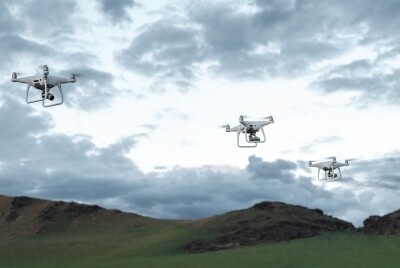As the drone industry continues to grow, so do the rules and regulations revolving around drones—a paramount concern for aviation authorities worldwide. In this article, and as we delve into the winter of 2024, we would like to highlight pivotal developments, challenges, and implications shaping the landscape of commercial drone regulation from the FAA.
Postponing The Remote ID Mandate
FAA’s Remote ID rule provides identification and location information for every drone and broadcasts it to other parties. The objective is to lay the foundation of the safety and security groundwork needed for more complex drone operations and help the FAA, law enforcement, and other federal agencies locate the control station when a drone appears to be flying in an unsafe manner or where it is not allowed to fly.
Late last year, right before the Remote ID rule would go into effect, the FAA announced a six-month extension, due to “unanticipated issues that some operators are experiencing finding some remote identification broadcast modules." While the FAA expects pilots to comply with the initial September 16, 2023, date, they understand “that some drone pilots may not be able to comply because of limited availability of broadcast modules and lack of approved FAA-Recognized Identification Areas." For that reason, only after March 2024 and in those cases, “the FAA will consider all factors in determining whether to take enforcement action."
To get Remote ID ready, drone pilots can Operate Standard Remote ID drones, buy a Remote ID broadcast module and attach it to a drone, or fly within FAA-recognized identification areas, sponsored by community-based organizations (CBOs), or educational institutions without Remote ID equipment.
Reintroducing the American Security Drone Act
In late 2023, Congress announced the approval of the 2024 National Defense Authorization Act (NDAA), which reintroduced the American Security Drone Act. According to Rep. Rob Wittman, this act “will promote American superiority and competitiveness within the drone market, protect against IP theft and data security violations by the Chinese Communist Party, and fortify our national security."
The Act prohibits federal departments and agencies from operating or procuring any covered unmanned aircraft system manufactured or assembled by covered foreign entities, including PRC-based drone manufacturers. Additionally, it also prohibits the use of federal funds awarded through contracts, grants, or cooperative agreements to purchase covered unmanned aircraft systems.
The Release of the Final ARC Report
In January 2024, the FAA released the final report of the UAS Detection and Mitigating Systems Aviation Rulemaking Committee (ARC). Divided into several working groups and subgroups, the ARC is composed of representatives from the manned and unmanned aviation communities, government entities, various subject matter experts, and other stakeholders.
Having begun its work in May 2023, the ARC’s primary focus is on developing the best recommendations with as much consensus as possible regarding the safety of the NAS. From concerns surrounding legal authorities and constraints, near-real-time ability to share data and to identify verified operators, to communication plans, and the establishment of safety standards, the ARC claims the recommendations in this report “are intended to provide a framework of actions and policies to promote safe and widespread adoption of UAS D/M systems that does not adversely impact or interfere with the safe and efficient operation of the NAS."
The Reauthorization Act of 2023
Approved by the Committee on Commerce, Science, and Transportation in February 2024, the Reauthorization Act of 2023 sets out to improve aviation safety and consumer protections that Americans have been demanding. It includes several provisions to strengthen safety standards and oversight at the FAA and respond to safety concerns from recent aviation accidents and near-misses.
As part of the more than $107 billion authorized in appropriations for the FAA for fiscal years 2024 through 2028, the bill requires the FAA to create new standards and drone-related goals:
- Facilitate commercial use of drones by establishing a pathway for BVLOS operations and creating two additional test sites for companies to use drones for package delivery or other operations.
- Extending the BEYOND program for five more years.
- Expanding FAA research to safely integrate unmanned aircraft systems and advanced air mobility into the national airspace system.
















Comments